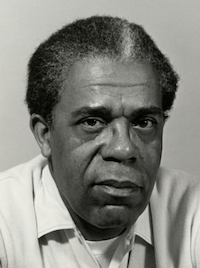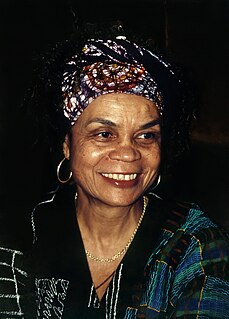Related Research Articles

Rumble in the Bronx is a 1995 Hong Kong martial arts comedy film starring Jackie Chan, Anita Mui and Françoise Yip. It was directed by Stanley Tong, with action choreographed by Chan and Tong. Released in Hong Kong in 1995, Rumble in the Bronx had a successful worldwide theatrical run, and brought Chan into the North American mainstream. The film is set in the Bronx area of New York City, but was filmed in and around Vancouver, Canada. The film grossed US$76 million worldwide, against a $7.5 million budget, marking it as one of the most profitable films at that time of release.

Bad Boys is a 1995 American buddy cop action comedy film directed by Michael Bay, in his feature directorial debut, produced by Don Simpson and Jerry Bruckheimer and starring Martin Lawrence and Will Smith as two Miami narcotics detectives, Marcus Burnett and Mike Lowrey. The film received mixed reviews from critics, and was commercially successful and gained a strong cult following. It spawned two sequels, Bad Boys II (2003), and Bad Boys for Life (2020).

The Black Arts Movement (BAM) was an African American-led art movement, active during the 1960s and 1970s. Through activism and art, BAM created new cultural institutions and conveyed a message of black pride.

Dudley Randall was an African-American poet and poetry publisher from Detroit, Michigan. He founded a pioneering publishing company called Broadside Press in 1965, which published many leading African-American writers, among them Melvin Tolson, Sonia Sanchez, Audre Lorde, Gwendolyn Brooks, Etheridge Knight, Margaret Walker, and others.

The PJs is an American adult animated stop-motion black sitcom created by Eddie Murphy, Larry Wilmore, and Steve Tompkins. It portrayed life in an urban public housing project, modeled after the Cabrini–Green housing projects in Chicago. The series starred Eddie Murphy, and was produced by Imagine Entertainment by Ron Howard and Brian Grazer, The Murphy Company and Will Vinton Studios in association with Touchstone Television, marking the show as Disney's first adult animated series; and Warner Bros. Television. The original run of the series debuted on Fox on Sunday, January 10, 1999, following the network's coverage of the NFC Divisional Playoffs. Two days later, the second episode aired in its regular Tuesday night time slot, following King of the Hill.The series ended on May 20, 2001 The title is an abbreviation for "the projects", referring to the show's public housing highrise.

Sonia Sanchez is an American poet, writer, and professor. She was a leading figure in the Black Arts Movement and has written over a dozen books of poetry, as well as short stories, critical essays, plays, and children's books. In the 1960s, Sanchez released poems in periodicals targeted towards African-American audiences, and published her debut collection, Homecoming, in 1969. In 1993, she received Pew Fellowship in the Arts, and in 2001 was awarded the Robert Frost Medal for her contributions to the canon of American poetry. She has been influential to other African-American poets, including Krista Franklin.

Nina Mae McKinney was an American actress who worked internationally during the 1930s and in the postwar period in theatre, film and television, after getting her start on Broadway and in Hollywood. Dubbed the nickname, The Black Garbo in Europe because of her striking beauty, McKinney was one of the first African-American film stars in the United States, as well as one of the first African Americans to appear on British television.
Larry Davis or, since 1989, Adam Abdul-Hakeem was an American man who was convicted in 1991 of a drug dealer's 1986 murder, known for his 1986 shootout in the Bronx with police, in which six officers were shot. Davis, asserting self-defense, was acquitted of all charges aside from illegal gun possession. In 2008, he died via stabbing by a fellow inmate.

Fort Apache, The Bronx is a 1981 American crime drama film directed by Daniel Petrie. The film is about a hard-drinking, lonely veteran cop, Murphy, and his young partner Corelli, who work in a crime-ridden precinct in The Bronx. Although Murphy's life takes a good turn when he falls in love with Isabella, a young nurse, the arrival of a new, law-and-order-minded police captain commanding the precinct, Connoly threatens to tip the neighborhood's delicate balance into anarchy. Danny Aiello, Kathleen Beller, and Pam Grier play supporting roles. It was written by Heywood Gould and produced by Martin Richards and Thomas Fiorello, with David Susskind as executive producer.

The Canary Murder Case is a 1929 American Pre-Code crime-mystery film based on the 1927 novel of the same name by S.S. Van Dine. The film was directed by Malcolm St. Clair, with a screenplay by Wright, Albert Shelby LeVino, and Florence Ryerson. William Powell starred in the role of detective Philo Vance, with Louise Brooks co-starred as "The Canary"; Jean Arthur, James Hall, and Charles Lane also co-starred in other principal roles.

The Keeper is a 2009 American action film starring Steven Seagal and directed by Keoni Waxman. It is the first collaboration between Seagal and director Waxman; the two have subsequently made eight more films and two seasons of a limited tv-series together.

Unwind is a 2007 dystopian novel by young adult literature author Neal Shusterman. It takes place in the United States in the near future. After the Second Civil War was fought over abortion, a compromise was reached, allowing parents to sign an order for their children between the ages of 13 and 18 to be "unwound" — taken to "harvest camps" and dissected into their body parts for later use. The reasoning is that, since 99.44% of the body is used, unwinds do not technically die because their individual body parts live on.

The Church of the Blessed Sacrament is a Roman Catholic parish church under the authority of the Roman Catholic Archdiocese of New York, located at Beach Avenue and Gleason Avenue, Soundview, the Bronx, New York City. The parish was established in 1927. It was merged into the parish of the Holy Family in 2015.
Daniel Beaty is an American actor, singer, writer, composer and poet. Beaty is known for his blend of music, movement, and words in such original works as Emergence-See and Through The Night.

Vanya and Sonia and Masha and Spike is a comedy play written by Christopher Durang. The story revolves around the relationships of three middle-aged single siblings, two of whom live together, and takes place during a visit by the third, Masha, who supports them. They discuss their lives and loves, argue, and Masha threatens to sell the house. Some of the show's elements were derived from works of Anton Chekhov, including several character names and sibling relationships, the play's setting in a country house with a vestigial cherry orchard, the performance of an "avant-garde" play by one of the main characters, and the themes of old vs. new generations, real vs. assumed identities, the challenges of a woman growing older after successes in a career that seems to be ending, the hope and carelessness of youth, intrafamilial rivalries, and the possible loss of an ancestral home.

The shooting of Ramarley Graham took place in the borough of the Bronx in New York City on February 2, 2012. Richard Haste, a New York Police Department officer, shot Graham in the bathroom of the latter's apartment. The 18-year-old Graham was in possession of marijuana when officer Haste tried to stop him on the street. Graham fled to his grand mother’s house, and went into the bathroom to flush the marijuana. Officer Haste forced his way into the building, kicked down the front door and then broke down the bathroom where he shot Ramarley Graham to death. Haste could be seen on surveillance cameras smiling and laughing with the responding officers and detectives—the same men who would later testify they had told Haste that Graham had a gun. Haste claimed to believe Graham had been reaching for a gun in his waistband, but no weapon was recovered.

On September 6, 2018, off-duty Dallas Police Department patrol officer Amber Guyger entered the Dallas, Texas, apartment of 26-year-old accountant Botham Jean and fatally shot him. Guyger said that she had entered the apartment believing it was her own and that she shot Jean believing he was a burglar. Local authorities did not arrest Guyger for three days and initially charged her with manslaughter rather than murder, leading to protests and accusations of racial bias, since Jean was black and unarmed and was killed in his home by a white off-duty officer who had apparently disregarded police protocols. However, two months later, her charge was upgraded to murder. On October 1, 2019, Guyger was found guilty of murder. The next day, she received a sentence of ten years in prison.

Breonna Taylor, a 26-year-old African-American woman, was fatally shot in her Louisville, Kentucky, apartment on March 13, 2020, when white officers Jonathan Mattingly, Brett Hankison, and Myles Cosgrove of the Louisville Metro Police Department (LMPD) forced entry into the apartment as part of an investigation into drug dealing operations. Taylor's boyfriend, Kenneth Walker, was inside the apartment with her when the plainclothes officers knocked on the door and then forced entry. The officers said that they announced themselves as police before forcing entry, but Walker said he did not hear any announcement, thought the officers were intruders, and fired a warning shot at them. The shot hit Mattingly in the leg, and the officers fired 32 shots in return. Walker was unhurt but Taylor, who was behind Walker, was hit by six bullets and died. According to police, Taylor's home was never searched.
Running while Black is a sardonic description of racial profiling experienced by Black runners in the United States and Canada. In the United States, jogging gained popularity after World War II, and has largely been portrayed by American media as an activity typically engaged in by White people; joggers of color are treated with suspicion. Black runners report taking precautions such as wearing bright colors to appear non-threatening, avoiding running outside of daylight hours, running in groups for safety, and avoiding running fast enough to appear to be "running away from something."
Kawaski Trawick was an African American personal trainer and dancer who was shot and killed on 14 April 2019 by police officers at his home in the Bronx, New York City.
References
- ↑ "Black Revolutionary Theatre", TDR: The Drama Review, 12 no. 4:29-124 (1968), The School of the Arts, New York University, New York, NY, 1968.
- 1 2 3 "Black Playwrights Present New Plays." New York Amsterdam News (1962–1993): 20. October 17, 1970. ProQuest. Web. May 28, 2014.
- 1 2 Melhem, D. H. Heroism in the New Black Poetry: Introductions & Interviews. Lexington, KY: University of Kentucky, 1990. Print. p. 161.
- ↑ "Black Revolutionary Theatre", TDR, 12 no. 4:29-124 (1968), p. 2.
- ↑ "Black Revolutionary Theatre", TDR, 12 no. 4:29-124 (1968), p. 3.
- ↑ "Black Revolutionary Theatre", TDR, 12 no. 4:29-124 (1968), p. 4.
- ↑ "Black Revolutionary Theatre", TDR, 12 no. 4:29-124 (1968), p. 5.
- ↑ La Donna Forsgren (2018). "Chapter 3. 'Armed Prophet': Sonia Sanchez and the Weapon of Words." In Search of Our Warrior Mothers: Women Dramatists of the Black Arts Movement. Northwestern University Press. ISBN 9780810136953.
- ↑ "Black Revolutionary Theatre", TDR, 12 no. 4:29-124 (1968), pp. 6–12.
- ↑ "Black Revolutionary Theatre", TDR, 12 no. 4:29-124 (1968), pp. 13–15.
- ↑ "Black Revolutionary Theatre", TDR, 12 no. 4:29-124 (1968), pp. 16–18.
- 1 2 Melhem, Heroism in the New Black Poetry, 1990, p. 162.
- Sonia Sanchez, "The Bronx is Next (1968)", in Annemarie Bean (ed.), A Sourcebook of African-American Performance: Plays, People Movements, Routledge, 1999, pp. 46–54.